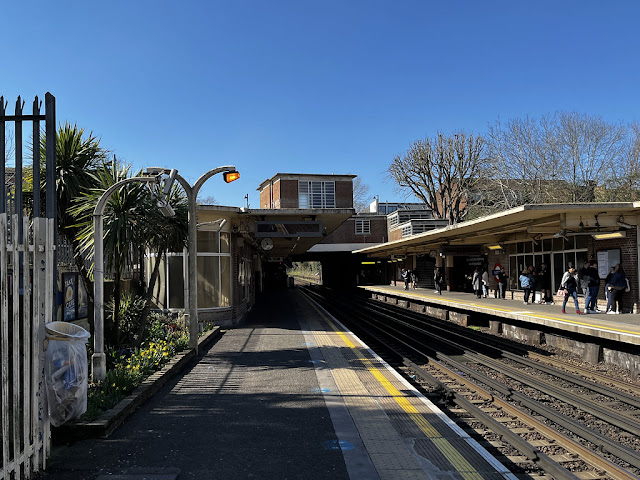Ascot is a stop on the
London Waterloo to
Reading Line in Berkshire between
Sunningdale and
Martins Heron. It is also the terminus of the Ascot-
Guildford Line.
 |
| SWR 450 547 arrives at Ascot |
| Information |
| Type: |
National Rail
(London Waterloo-Reading Line & Ascot-Guildford Line) |
| Station code: |
ACT |
| Opened: |
1856 |
| Platforms: |
3 |
The station was opened by the Staines, Wokingham & Woking Junction Railway in 1856, for a about a month it was the terminus of the line before construction continued onwards towards
Wokingham. The station was renamed
Ascot & Sunninghill in 1857 and kept this name until 1921 when it reverted back to just Ascot.
A line to
Ash Vale from Ascot was opened in 1870. The station was taken over by the London & South Western Railway and later the Southern Railway who electrified the line to Ascot in 1939. The work involved track layout realignment and station rebuilding [1].
Ascot now has three platforms which are all bi-directional, platform 1 used to have platform faces either side of the single track but one side has been fenced off now. The track layout at Ascot was once much more intricate with four signalboxes but these were closed in the 1960s. The station is managed by South Western Railway.
 |
| A SWR train waits at Ascot |
 |
| View down the platform under the canopy |
 |
| Platform canopy |
 |
| Platform 1 |
 |
| View down the platforms |
[1] David Brown, Southern Electric Volume 2 (Capital Transport, 2010) p. 36











































